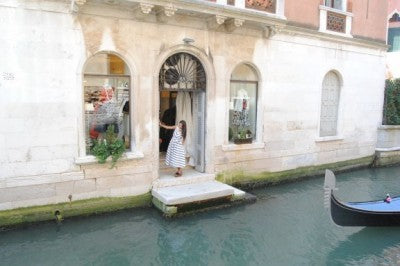What's happening when two Japanese artists - Fujiko Enami and Ushio Konishi - meet Murano glass?
Something very magical indeed.
In 1542, on the tiny island of Tanegashima in southern Japan, arrived a Portuguese ship that had suffered shipwreck. For the West, this was the real discovery of Cipango (Zipangu), which Marco Polo describes in his book The Million as a "land rich in gold and pearls".
That moment marked the start of frequent exchanges with the West: Western merchants and Christian missionaries began to arrive, bringing with them objects and food never seen before in Japan, including guns and other prestigious objects, which were presented either as goods or as gifts to the governors and the Imperial court. Among the many things introduced by Westerners in the sixteenth century was Venetian glass.
Between 1992 and 1993, as part of an archaeological dig in the site ofm Hachioji Castle, on the outskirts of Tokyo, a few fragments of glass filigree were discovered, dating to 1590. Venetian glass objects and fragments have also been found on other sites, but the discovery of a relic filigree is so far unique.
The work in this photo, made by Ushio Konishi on behalf of the City of Hachioji, is the replica of the vase to which it is assumed the fragments found belonged.
Ushio Konishi - Tea pot
Ushio Konishi - Avventurina plate
U shio Konishi - Tsukimi-zen Set
Ushio Konishi - Mizusashi: water container for tea ceremony
Fujiko Enami - Tabakobon: smoking set
Fujiko Enami - Suzuribako "Wisteria": writing box
Fujiko Enami - Sagejyu: picnic box
Fujiko Enami - Pipe portable case
Fujiko Enami - Inrō
Fujiko Enami - Inori "Prayer"
Fujiko Enami - Furidashi: small candies containers
Fujiko Enami - Chawan: tea bowls for tea ceremony
Fujiko Enami - Blue karakusa chalices
It has already been almost twenty years since I first started using murrine for my work.
The murrine, like mosaics, are composed of a sequence of geometric patterns such as points, circles or squares separated from each other. I tried, nevertheless, to create organic motifs that develop together. In recent years I have been inspired by both the archaeological grounds of the Jomon period (10,000 to 300 BC) in Japan, as well as the imported motifs from Eurasia.
The sometsuke karakusa, phytomorphic patterns, were imported to Japan with the Chinese ceramics of the Ming period and were appreciated and applied especially in Imari porcelain. The karakusa, arabesque, has its roots in Mesopotamia and Egypt and reached the East on the Silk Road.
For us artists of blown glass, the chalice is a particular object both for its shape as well as for the production process. Masterpieces have been created in Venice for centuries which still fascinate worldwide today. During the exhibition I want to confront these works in homage to thousands of Venetian artists of the past and present.
-Fujiko Enami
Fujiko Enami - Rainbow after the rain
Find out more about the two artists:
http://ushio-studio.com/english/index.html


























Dejar un comentario
Todos los comentarios se revisan antes de su publicación.
Este sitio está protegido por hCaptcha y se aplican la Política de privacidad de hCaptcha y los Términos del servicio.